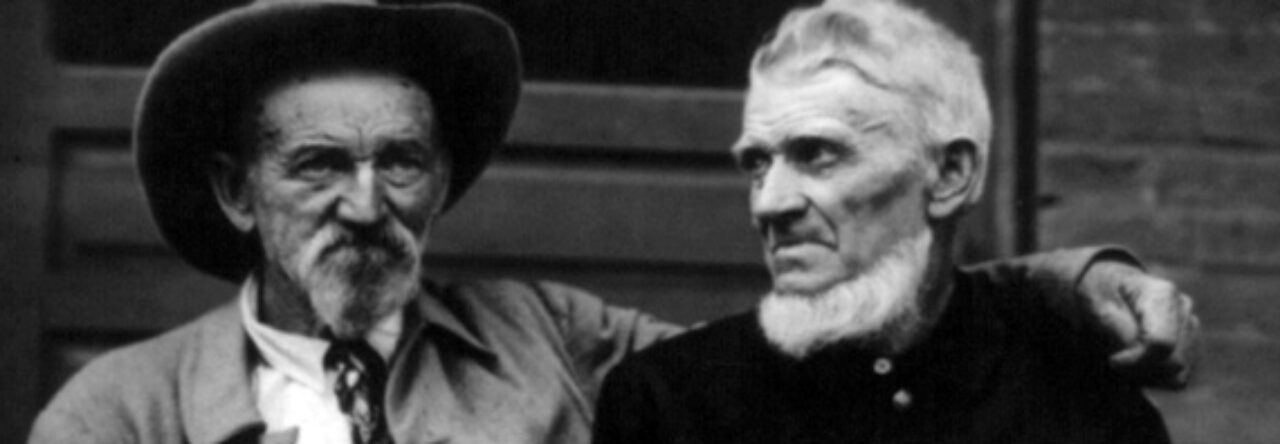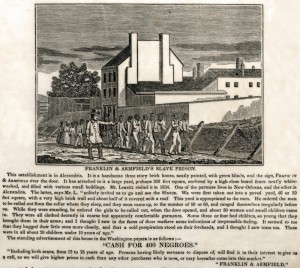Sources
The Virginia African American Heritage Program has a short essay about the Franklin and Armfield office on their website. In addition, Edward E. Baptist uses Isaac Franklin and John Armfield as an example in his article “”Cuffy,” “Fancy Maids,” and “One-Eyed Men”: Rape, Commodification, and the Domestic Slave Trade in the United States,” American Historical Review (2001). Robert H. Gudmestad also discuses the two slave dealers in A Troublesome Commerce: The Transformation of the Interstate Slave Trade (2003).
Places to Visit
Franklin and Armfield’s office became a National Historic Landmark in 1978 and is now home to the Freedom House Museum. The museum opened in 2008 and is located in Alexandria, Virginia at 1315 Duke Street. You can also find a historical marker about Franklin and Armfield outside the museum. In addition, the Bruin Slave Jail is located several blocks away at 1707 Duke Street. In 1854 Harriet Beecher Stowe explained in The Key to Uncle Tom’s Cabin that she used information about the jail to help write Uncle Tom’s Cabin. The Edmondson sisters were one of many slaves who were imprisoned at this jail. In addition, you will find a statue of the two sisters at Edmonson Plaza (1701 Duke Street). The statute was unveiled in June 2010 and serves as a memorial to those suffered while in the jail. You can learn more about the Bruin Slave Jail from a short overview on the Alexandria Black History Museum’s website. Also see this short essay from the Virginia African American Heritage Program. Visitors should note that this building is not open to the public.
Images
The Franklin and Armfield’s Slave Prison image is a detail from a broadside available at the Library of Congress.


Leave a Reply